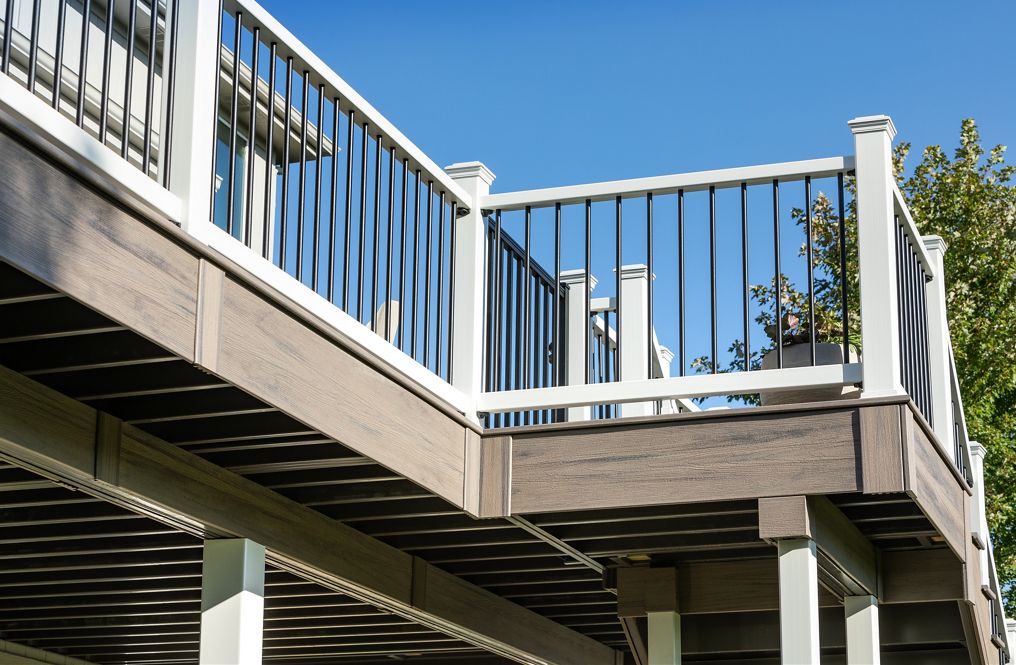Deck Fascia Installation: Enhance Your Deck’s Appearance and Protection
Deck fascia installation is a crucial element in the finishing touches of your deck. Fascia boards cover the exposed ends of the deck’s framing, creating a clean, finished look while protecting the structural components from the elements. Proper installation of fascia not only enhances the visual appeal of your deck but also helps to maintain its durability and longevity. Learn about the importance of deck fascia and the steps involved in installing it.
What is Deck Fascia?
Deck fascia is a board that runs along the outer edge of a deck, covering the ends of the joists and framing. It serves both aesthetic and functional purposes by providing a neat, uniform appearance and shielding the deck’s structural elements from moisture and damage. Fascia boards can be made from various materials, including wood, composite, or PVC, depending on your deck’s design and maintenance preferences.
Why Deck Fascia Installation is Important
- Aesthetic Appeal: Fascia boards provide a polished, finished look to your deck by concealing the raw ends of the joists. This helps create a seamless, attractive appearance that enhances the overall design of your outdoor space.
- Protection: Fascia boards help protect the underlying deck structure from exposure to the elements. By covering the ends of the joists, they reduce the risk of water infiltration, which can lead to rot, mold, or deterioration.
- Improved Durability: Properly installed fascia boards help maintain the integrity of the deck’s structure. They prevent debris from accumulating in the joist spaces and reduce the likelihood of pests or insects causing damage.
- Enhanced Safety: Fascia boards cover sharp edges and prevent the exposure of structural components, contributing to a safer deck environment. They help eliminate potential hazards from exposed ends of joists or beams.
- Maintenance Ease: Installing fascia can make deck maintenance easier by providing a barrier that keeps dirt and debris away from the deck’s structural components. This helps in maintaining the deck’s overall condition and longevity.
Signs You Need Deck Fascia Installation
- Exposed Joists: If the ends of the joists are visible and unprotected, it’s time to install fascia boards to cover and protect them.
- Aesthetic Concerns: If your deck looks unfinished or lacks a polished edge, fascia installation can provide a clean, uniform appearance.
- Water Damage: Signs of water damage or deterioration on the ends of the joists indicate that fascia installation can help prevent further issues.
- Structural Wear: If you notice wear or damage to the joist ends, installing fascia can provide additional protection and extend the life of your deck.
- Pest Issues: If pests or insects are getting into the joist spaces, fascia boards can help seal these entry points and protect the deck’s structure.
Deck Fascia Installation Process
- Measurement and Planning: Start by measuring the length of the deck edges where the fascia will be installed. Plan the layout and determine the size of the fascia boards needed to cover the exposed ends of the joists.
- Choosing Materials: Select the appropriate fascia material based on your deck’s design and maintenance preferences. Options include wood, composite, or PVC, each offering different benefits in terms of appearance and durability.
- Cutting and Preparing: Cut the fascia boards to the required length, ensuring they fit snugly against the deck’s framing. Pre-drill holes if necessary to prevent splitting and ensure a smooth installation.
- Attaching Fascia Boards: Secure the fascia boards to the deck’s framing using screws or nails. Ensure the boards are aligned correctly and fastened securely to prevent any gaps or movement.
- Sealing and Finishing: Apply any necessary sealant or finish to the fascia boards to enhance their durability and protect them from the elements. This step is especially important for wood fascia to prevent moisture damage.
- Final Inspection: After installation, inspect the fascia boards to ensure they are properly aligned, securely attached, and free from gaps or imperfections. Make any final adjustments as needed.
Choosing the Right Fascia Material
- Wood: Wood fascia offers a traditional, natural look and can be stained or painted to match your deck’s design. It requires regular maintenance to protect against moisture and pests.
- Composite: Composite fascia is made from a blend of wood fibers and plastic, providing a durable and low-maintenance option. It resists moisture, rot, and fading, making it a popular choice for modern decks.
- PVC: PVC fascia is a highly durable, moisture-resistant option that requires minimal maintenance. It provides a clean, uniform appearance and is ideal for areas with high humidity or harsh weather conditions.
Enhance Your Deck with Professional Fascia Installation
Deck fascia installation is an essential step in completing your deck’s appearance and ensuring its protection. By choosing the right materials and following proper installation techniques, you can enhance your deck’s aesthetic appeal, maintain its structural integrity, and extend its lifespan. Trust in professional expertise to ensure your fascia is installed correctly and your deck remains a beautiful and functional outdoor space.


